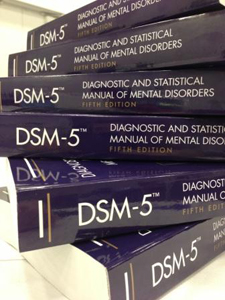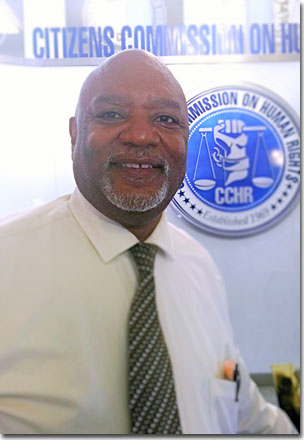Rev. Fred Shaw wants to protect fellow African Americans from Psychotropic Drug Dangers
By CCHR International
The Mental Health Industry Watchdog
July 17, 2019
While July is recognized as Minority Mental Health Month, Rev. Frederick Shaw, the international spokesperson for the Citizens Commission on Human Rights International (CCHR) warns that it can be used to stigmatize African Americans and put them at risk of harm from psychiatric treatments prescribed them. Rev. Shaw, who is also the Executive Director of the Inglewood-South Bay branch of the NAACP (National Association for the Advancement of Colored People), said that Minority Mental Health Month was started with good intentions by author and advocate, the late Bebe Moore Campbell, but it’s been used to further target African Americans, Hispanics and others, getting them, hooked on damaging psychotropic drugs and even electroshocked. (Click here to sign CCHR’s Petition to Ban ECT.)
Two patient “advocacy” groups are proponents of the month, yet both have come under Congressional investigation for their financial links to pharmaceutical companies that manufacture psychiatric drugs. One, the National Alliance for the Mentally Ill (NAMI) accrued 75% of its income—or $23 million over a three year period—from drug makers.[1] Another is Mental Health America, which receives funding from Janssen Pharmaceuticals, Alkermes and Otsuka.[2] All companies are major manufacturers of antipsychotics and/or antidepressants.[3] Between 2001 and 2010, MHA had received more than $26 million in pharmaceutical funding.[4]
Rev. Shaw said the pharmaceutical interests alone should beg questions about the veracity of a program that claims 20% of African Americans are more likely to experience serious mental health problems than the general population.[5] “Being oppressed and subjected to racism is a human rights abuse, not a ‘mental disorder,’” Rev. Shaw adds. “Claiming this requires treatment, which amounts to mind-altering antidepressants, antipsychotics, and brain-damaging electroshock, is tantamount to mind slavery. Look at the adverse effects of these so-called treatments—they can physically and mentally incapacitate people.”
Professor Herb Kutchins co-author of Making Us Crazy – DSM: The Psychiatric Bible and the Creation of Mental Disorders said: “Defenders of slavery, proponents of racial segregation…have consistently attempted to justify oppression by inventing new mental illnesses and by reporting higher rates of abnormality among African-Americans or other minorities.”[6]

Dr. Rick Wallace, Ph.D. also says that “mental illness diagnosis is highly subjective” and that such a diagnosis, “is far from an exact science. Modern psychiatry has expanded its reach to the point that even the most normal of emotions and mental states are now labeled as one ‘disorder’ or another.”
Dr. Rick Wallace, Ph.D. also says that “mental illness diagnosis is highly subjective” and that such a diagnosis, “is far from an exact science. Modern psychiatry has expanded its reach to the point that even the most normal of emotions and mental states are now labeled as one ‘disorder’ or another.” [7]
Because of such stigmatization, Rev. Shaw points to the fact that African Americans are prescribed more antipsychotics than others and African American men receive excessive doses of the drugs. African American men have been labeled with schizophrenia at a rate at least five times higher than other groups.[8]
African Americans are targeted for learning disorder labeling. Dr. Wallace called this “The Black Academic Holocaust,” stating: “Not only is there an issue with young black students being disproportionately diagnosed with learning disorders, but they are also being prescribed psychotropic drugs at an alarming rate—with some being prescribed these medications as early as at the age of 18 months.” [9]
A study also determined that African American children prescribed antipsychotics were nearly four times at greater risk of suffering Tardive Dyskinesia—irreversible damage to the nervous system—than European-American children prescribed them.[10]
Other side effects of antipsychotics include heart problems, blood disorders, emotional effects (excitable, agitated, aggressive, depressed, out of touch with reality, socially withdrawn), eye problems, liver disorders, sexual and hormonal problems, suicidal feelings and behavior, tardive psychosis (new psychotic symptoms from withdrawal), weight gain, and a life-threatening neurological disorder.[11]
Risperdal (risperidone) is one of several antipsychotics prescribed to children and in boys can cause female breast growth requiring mastectomies.[12]
Users of antipsychotics under age 24 have a three-times greater risk of developing diabetes, according to JAMA Psychiatry.[13] Yet, already, African Americans are 1.7 times more likely to have diabetes as whites.[14]
Rev. Shaw further questions the 20% mental disorder rate when there’s no scientific evidence that behavior or reactions to racism are mental diseases. Thomas Insel, psychiatrist, and former Director of the National Institute for Mental Health (NIMH), said, psychiatric “diagnoses are based on a consensus [vote] about clusters of clinical symptoms, not any objective laboratory measure [tests].”[15]
Shaw says Minority Mental Health Month should be a warning and highlight the history of betrayal of African Americans when offered “help” in the name of mental health care.
- In 1792, the “father of American psychiatry,” psychiatrist Benjamin Rush, declared that Blacks suffered from a disease called Negritude. The “cure” was when the skin turned “white.” Like lepers, he said, they needed to be segregated for their own good and to prevent their “infecting” others.[16]
- African Americans were diagnosed with Drapetomania (drapetes, runaway slave, and mania, meaning crazy) and Dyasethesia Aethiopis (laziness and impaired sensation). Drapetomania supposedly caused Blacks to have the “uncontrollable urge” to run away from their “masters.” The “treatment” was “whipping the devil out of them.”[17]
- 1960s: Psychiatrists claimed civil rights protests caused violent “schizophrenic” symptoms in “Negro populations,” calling this “protest psychosis.” Black men were said to have developed “hostile and aggressive feelings” and “delusional anti-whiteness after listening to civil rights leaders.”[18] Ads for antipsychotics used African symbols to reflect so-called “violent traits” in Blacks.[19]
- Psychiatrist Eugene Brody, a President of the World Federation for Mental Health, claimed that “many, if not all [African] American[s] appear to suffer from a series of problems in identification, stemming from culture conflict, caste restrictions, and minority status” and may “produce distortions or impairments” that could “facilitate the development of schizophrenic types of behavior.”[20]
- 1970s: Psychiatrist Louis West, a once Central Intelligence Agency (CIA)-funded psychiatrist, made plans for a program at UCLA to do genetic and biochemical studies to “predict the probability of occurrences” of violent behavior in young, black urban males.[21]
- Psychosurgery operations were performed on Black children as young as five to control “hyperactive” and “aggressive” behavior.[22]
- 1990s: NIMH director, psychiatrist Frederic Goodwin, compared inner city youth [mostly black or Hispanic] with “hyperaggressive” and “hypersexual” monkeys in a jungle.[23] Goodwin approved funding for a national “Violence Initiative” aimed at identifying violent inner-city children. He estimated 100,000 children, some as young as five, would need “psychiatric intervention,” that included Prozac or other antidepressants.[24] Yet, “The link between antidepressants and violence, including suicide and homicide, is well established,” Patrick D. Hahn, affiliate professor of Biology at Loyola University, Maryland stated.[25]
- In 2000, NAMI awarded Goodwin its “NAMI Exemplary Psychiatrist Award” for a national radio series he did.[26]
Rev. Shaw says that after hundreds of years of oppression, psychiatrists have re-defined this abuse as African Americans being prone to violence and then prescribing them drugs to “help,” yet they create the violence and psychosis we are accused of, justifying another label, “schizophrenia.” He recommends anyone who has been abused in the mental health system to contact CCHR.
References:
[1] https://www.grassley.senate.gov/news/news-releases/grassley-works-disclosure-drug-company-payments-medical-groups; https://psychcentral.com/blog/nami-nearly-75-percent-of-funding-from-pharma/; /
[2] https://www.mentalhealthamerica.net/minority-mental-health-month
[3] Janssen makes Risperdal, Otsuka Abilify,
[4] https://www.cchrint.org/2015/05/08/mental-health-month-patient-advocacy-or-pharma-funded-advertising/
[5] https://www.nami.org/Find-Support/Diverse-Communities/African-American-Mental-Health
[6] Herb Kutchins & Stuart A. Kirk, Making Us Crazy – DSM: The Psychiatric Bible and the Creation of Mental Disorders, (The Free Press, New York, 1997), p. 200.
[7] http://www.theodysseyproject21.com/2014/12/21/black-academic-holocaust-psychotropic-drugs-black-students/
[8] http://www.upi.com/Health_News/2010/01/12/Schizophrenia-over-diagnosed-in-blacks/UPI-80801263277832/.
[9] http://www.theodysseyproject21.com/2014/12/21/black-academic-holocaust-psychotropic-drugs-black-students/
[10] I Wonodi, et al, “Tardive Dyskinesia in children treated with atypical antipsychotic medications,” Mov. Disorder, 15l22 (12), Sept. 15, 2007, pp. 1777-82.
[11] Dr Katherine Darton, “Making sense of antipsychotics,” Mind (National Association for Mental Health-UK), 2016, https://www.mind.org.uk/media/4703393/antipsychotics-2016-pdf.pdf.
[12] https://www.aboutlawsuits.com/risperdal-mastectomy-lawsuit-66924/
[13] https://jamanetwork.com/journals/jamapsychiatry/fullarticle/1731662
[14] http://www.diabetes.org/living-with-diabetes/treatment-and-care/high-risk-populations/treatment-african-americans.html
[15] Thomas Insel, “Transforming Diagnosis,” NIMH Website, 20 Apr. 2013, http://www.nimh.nih.gov/about/director/2013/transforming-diagnosis.shtml
[16] Robert N. Proctor, Racial Hygiene, Medicine Under the Nazis, (Harvard University Press, 1988), p. 10.
[17] Samuel A. Cartwright, M.D., “Report on the Diseases and Physical Peculiarities of the Negro Race,” New Orleans & Surgical Journal, 1851.
[18] Jonathan M. Metzl, The Protest Psychosis, How Schizophrenia became a Black Disease, (Beacon Press, Boston, 2009), pp. xii, xiv, p. 101
[19] Tanya M. Luhrmann, Ph.D., “The Protest Psychosis: How Schizophrenia Became a Black Disease,” Amer. Journ. Of Psychiatry (online), Apr. 2010.
[20] Jonathan M. Metzl, The Protest Psychosis, How Schizophrenia became a Black Disease, (Beacon Press, Boston, 2009), pp. 101-102.
[21] “Dr. L. Jolyon West: the LSD cult behind the Cult Awareness Network,” EIR News Service Inc, 6 Sep 1991, https://larouchepub.com/eiw/public/1991/eirv18n34-19910906/eirv18n34-19910906_058-dr_l_jolyon_west_the_lsd_cult_be.pdf; Peter Schrag, Mind Control, (Panthenon Books, New York, 1978), pp. 3-5.; https://www.cchrint.org/2009/09/03/cia-mind-control-doctors/
[22] http://www.breggin.com/index.php?option=com_content&task=view&id=97.
[23] https://www.psychologytoday.com/us/articles/200403/the-identity-dance
[24] https://www.nytimes.com/1992/09/18/opinion/l-us-hasn-t-given-up-linking-genes-to-crime-153192.html; http://www.greens.org/s-r/19/19-07.html
[25] Patrick D. Hahn, “Antidepressants: a deadly treatment?,” Baltimore Sun, 11 Apr. 2015, http://www.baltimoresun.com/news/opinion/bs-ed-antidepressants-violence-20150411-story.html
[26] https://www.nami.org/Press-Media/Press-Releases/2000/NAMI-Recognizes-Outstanding-Psychiatrists


